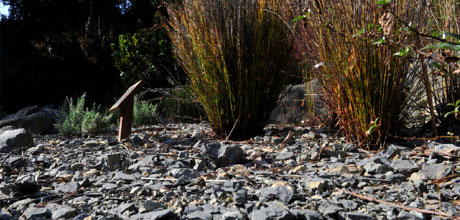How to save time in the garden
This article was first published on 14 Sep 2011.

Mulching
In spring we search the soil in great anticipation to see what has emerged after winter. All those treasures planted in previous years come out of dormancy, and with a bit of skill and luck will look better than the previous year. The greatest problem is that not only desirable plants emerge, but so do those pesky weeds.
Invest in not just the plants
It took me several years to realise the benefits of spending a little money on good quality mulch. It can save hours of hard, back aching weeding. The choice of weed suppressing mulches is huge, and each one has different benefits and drawbacks, but in most situations any mulch is better than none.
Endless options
The type of mulch can vary for the group of plants you are growing. In the Australian borders at Dunedin Botanic Garden we use bark mulch. This is low in nutrients as the plants can grow too quickly if over feed, becoming weak and spindly.
In the Southern African Garden gravel is used as mulch. Again, it is low in nutrients and absorbs heat during the day, to radiate at night, reducing the damage caused by frosts.
In the North Asian borders we use pea straw as it holds the moisture well and adds nutrients suiting many of the woodland plants.
I could go on as there are countless options available. Find an option that suits your budget and situation, saving you time to admire the plants you want and smother the ones you don’t.
Dylan Norfield is curator of the Geographic Collection and Arboretum at Dunedin Botanic Garden.


